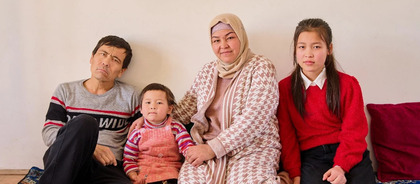We often assume that public childcare services boost women's employment by freeing up their time. But what if the situation is more complex? In many traditional societies, multiple generations of women—mothers, grandmothers, and aunts—live together under one roof, yet few, if any, are employed. With informal childcare already widespread, does expanding public childcare still make a difference? And if so, how?
In Uzbekistan, a Central Asian country with a population of around 37 million, preschool enrollment in 2017 was one of the lowest in the world, with fewer than 30% of children aged 3-7 attending preschool, the World Bank's story said.
Between 2018 and 2022, the government launched a nationwide preschool expansion, tripling the number of facilities and bringing childcare closer to home for thousands of families in both urban and rural areas. At first glance, you might ask, “Why invest in formal childcare when informal care is already the norm?” But the ripple effects have been both surprising and transformative.
Measuring the Impact: Data and Methodology Matter
To assess the effects of this ambitious government policy, we conducted a study using data from the Listening to the Citizens of Uzbekistan (L2CU), a household survey carried out by the World Bank on monthly basis. The survey tracks economic and social trends in Uzbekistan in real time, covering approximately 1,500 households nationwide.
By combining this data with labor force surveys and administrative education data, we compared changes in women’s employment between areas that experienced greater preschool expansion and those that did not. This rigorous evaluation method allows us to isolate the impact of the preschool policy on female labor force participation (LFP) in Uzbekistan.
What did we find? A 12% increase (or 3.3 percentage points) in female LFP that can be attributed to pre-school expansion —a striking result in a country where women have historically faced significant barriers to employment.
Beyond Freeing Up Time: The Role of Education
What’s driving this shift? Many studies suggest that access to childcare enables women to enter the workforce simply by freeing up time. But Uzbekistan’s case tells a more nuanced story. The real game-changer is that families see preschool as an investment in their children’s future.
Preschool fees are significant (ranging from 25 to 200% of a woman’s monthly income). But they are not seen as just an added expense. Families deeply value early childhood education and are willing to make financial sacrifices to access it. As a result, more women are entering the workforce—not solely because their time is freed up by the pre-school, but because they see employment as a way to afford what they believe is a crucial investment in their children’s development.
This aligns with our findings: the impact on women’s employment is strongest among families that place a high value on education. In other words, the decision to work is not just about reconciling duties of childcare with work—it’s about enabling the next generation to thrive.
It Takes a Village: More Than Just Moms
An unexpected outcome of the government policy is that its benefits extend beyond mothers. In Uzbekistan’s multigenerational households, grandmothers, aunts, and other women are also joining the workforce. By sharing the caregiving responsibilities more evenly, the policy has allowed families reconsider who can pursue employment. This shift isn’t just about mothers—it’s creating opportunities for all working-age women.
Uzbekistan’s Experience Offers Valuable Lessons for Other Countries
- Childcare is Key to Breaking Barriers: Affordable and accessible childcare unlocks opportunities, even in societies where informal caregiving is the norm.
- Investing in Education Drives Labor Force Participation: Families view early childhood education as an investment in human capital development, not just a childcare solution.
- Data and Evidence Shape Smarter Policies: The ability to measure results through data allows policies to be evaluated and refined, ensuring maximum impact.
What’s Next?
While the government policy has brought more women into the workforce, finding employment remains a challenge. Uzbekistan’s labor markets are still tight, and not every woman seeking work can secure a job. In 2021, female labor force participation was 28 percentage points lower than men, a gender gap that is much wider than the Europe and Central Asia average of 19 ppt. Young women had a 15.5% unemployment rate compared to 10% for young men, with 42% not in employment, education, or training (NEET), versus 8.8% of males. Additionally, women earned 34% less than men, surpassing the global average wage gap of 20%. This underscores the need for complementary policies that not only expand childcare options but also generate employment opportunities.
Uzbekistan’s bold approach demonstrates how evidence-based policy reforms can drive meaningful social and economic change across the society. By continuing to invest in early childhood education and job creation, the country can build on this progress, ensuring that more women—and their families—have the opportunity to shape their own economic futures.












